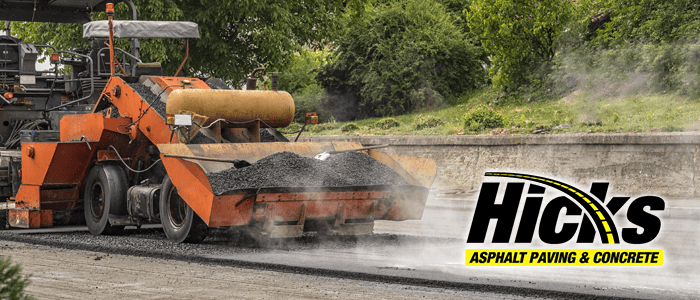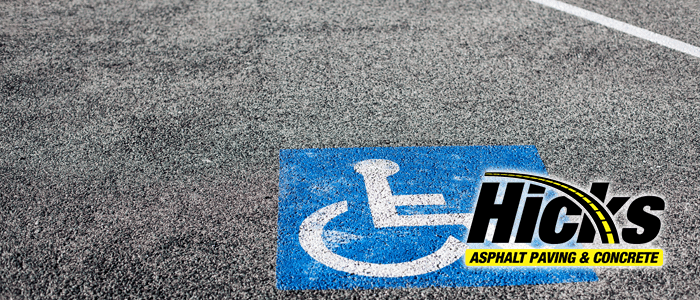We know asphalt to be an alternative to concrete as well as a material that is used in road construction repairs. Much like concrete, asphalt also has a life span that runs its own course which begs the question: What do you do with old asphalt, and what exactly is asphalt milling?
What Is Asphalt Milling?
Asphalt millings are the result of grinding up old and worn out asphalt, allowing it to take on a shape similar to gravel. Unlike gravel though, asphalt millings will bind together when compacted down, making them a great alternative to gravel roads, driveways, parking lots, and as a recycled addition to fresh asphalt.
How Do Professionals Collect Asphalt Millings?
When replacing an asphalt road, the typical practice is to use what is called a milling machine to grind up the old asphalt down to a predetermined depth and then vacuum up the milled asphalt material. The material that is left over will serve as a base for the new asphalt to be laid. Now that the asphalt millings are collected, it is time to decide what to do with them.
How Can Asphalt Millings Be Recycled?
The short answer to this question is yes! The most common recycling method is by re-mixing the millings back into an asphalt mixture for a more cost-effective aggregate. Secondly, the cost-savings come into play especially when asphalt millings are used in place of traditional gravel. An option that many Americans are turning to as a cost-effective alternative to gravel.
Benefits Of Using Asphalt Millings Instead Of Gravel Include
- Better cost. Asphalt milling involves no new materials. This allows contractors to significantly reduce the cost of asphalt millings.
- Sustainability. Asphalt millings are longer lasting than traditional gravel. Unlike gravel, asphalt millings seal together when machines compact them down. This provides drivers with a more solid surface that is perfect for those previously gravel roads. Plowing an asphalt millings road means less cleanup after since gravel won’t be pushed outwards into your lawn.
- No Maintenance Required. The best part of asphalt millings is that they do not require much maintenance. This helps prolong the life of asphalt roads.
- Great in weather. One of the best aspects of asphalt millings is their ability to stand up to harsh weather conditions. Alongside producing less dust and therefor less mud, the snow has a tendency to melt faster on asphalt millings than on gravel, and ice has a difficult time forming for a safer walking path. Best of all it hardens over time, becoming even more durable against the elements rather than weaker.
What Is The Paving Process For Asphalt Millings?
The process of paving asphalt millings is very similar to those used in the application of a hot asphalt mix. Once the area is determined to have adequate drainage, the asphalt millings can be paved down using power paving machines that will ensure a uniform and consistent depth of material. Following the paver, a vibratory roller is next up in ensuring the millings are compacted down and distributed evenly, smoothly, and most of all are level.
Asphalt millings will still contain many of the same components of the original asphalt mix, which allows sun and heat to help speed up the process of the millings sealing together to form a single uniform surface that will act as pavement. This leads to a significantly reduced amount of dust as compared to traditional gravel or dirt.
Why You Should Consider Asphalt Millings Instead Of Gravel
Traditional gravel options have several disadvantages when compared to an area that has been paved with asphalt millings.
- Potential for displacement – As mentioned above when plowing, driving, or even crossing a gravel path with a grass mower there is the potential to displace individual pieces of gravel away from their assigned location. Making clean-up a requirement for these areas – especially if gravel enters your lawn. Unfortunately, this also leaves room for pot-holes to form, exposing the dirt road beneath.
- Sand or dirt can leave a muddy gravel path – We’ve noted this before, but the amount of dust, sand, and dirt within traditional gravel has the very real potential to leave mud after rain. Couple this with the displacement issue and we see water-filled muddy pot-holes from exposed dirt roads.
- Lack of a solid surface – Gravel is, of course, a collection of rocks that are more often than not very close to the same size. This means it is near impossible to obtain a solid surface even with compacting.
- Snow and Ice – During the winter months snow and ice both have no issues sticking to gravel. Ice will often form between the pieces of gravel and eventually form a slick even surface for a treacherous crossing. Unlike gravel, snow melts quickly on asphalt millings and ice has a difficult time forming on it.
Asphalt millings are a great alternative for traditional gravel along with a cost-effective option for recycling materials. If you have any paving needs, be sure to contact us today!





